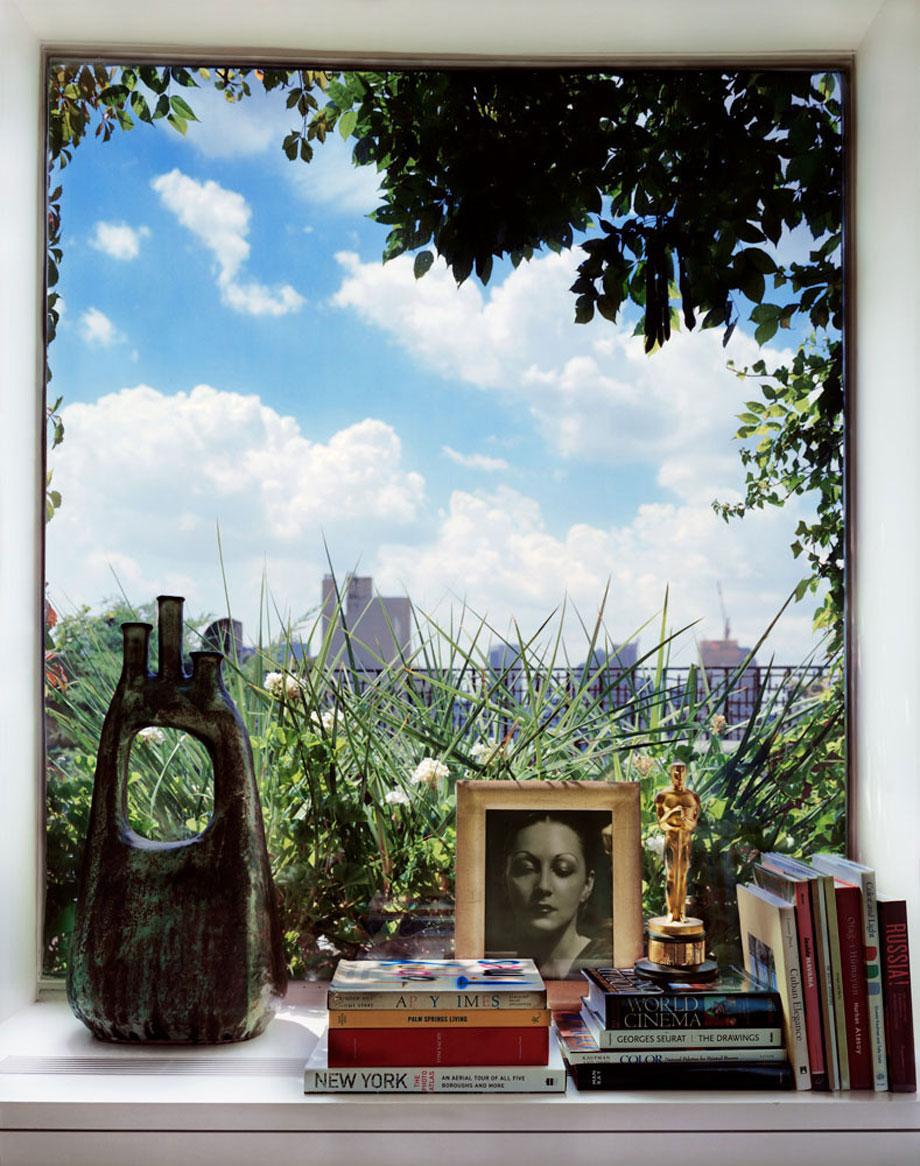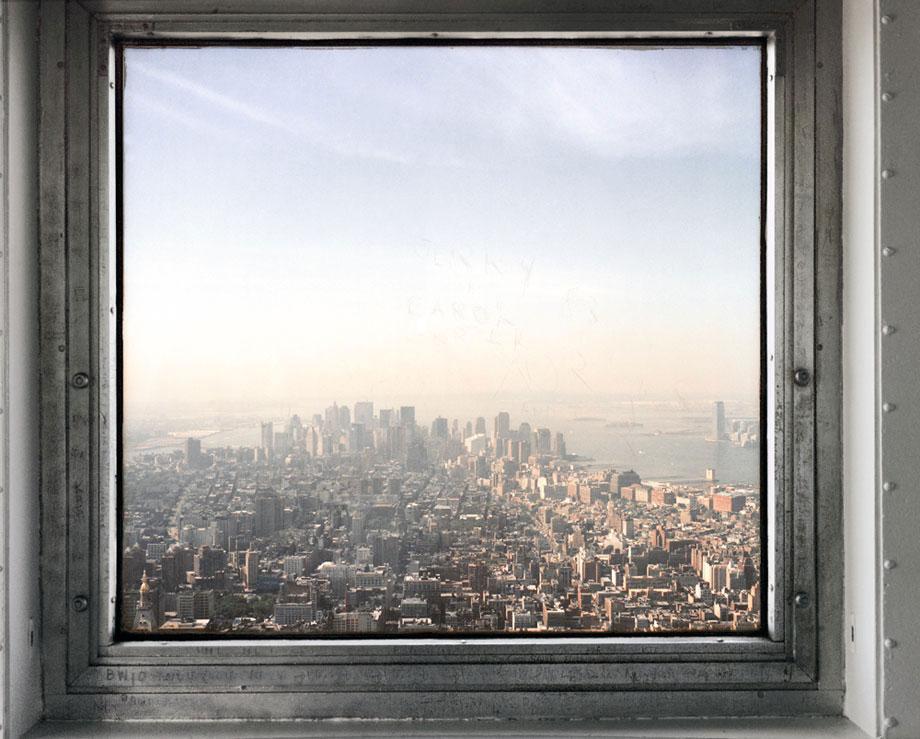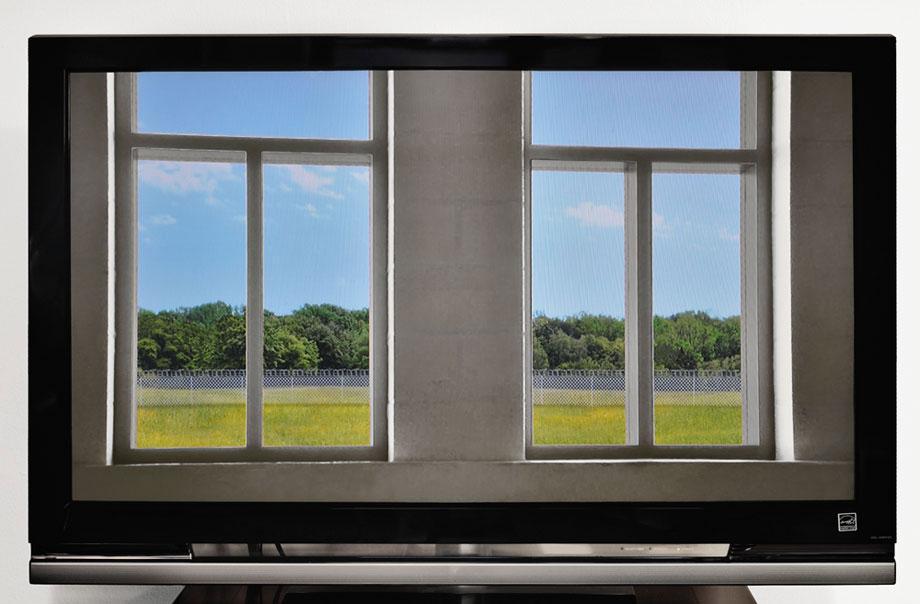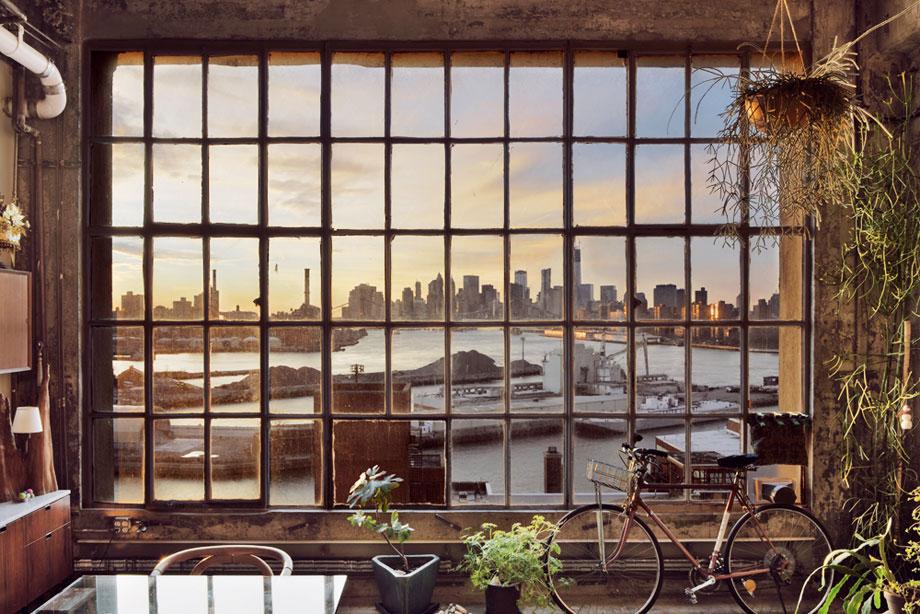Photographer David S. Allee’s process for creating a new series is a roundabout, albeit focused process.
His latest work, “Frame of View” currently on display at the Morgan Lehman Gallery in New York City until Feb. 16, is a perfect example of his routine.
“I usually have one project I’m focusing on but often have many other projects in the back of my mind for several years,” explained Allee about his current show. “Probably for the last 10 years I have occasionally been taking a picture thinking it would one day become this project. … Most of the images (in the show) are pretty recent, but one is from 10 years ago, another five years.”

David S. Allee.

David S. Allee.
Allee didn’t necessarily seek out images for “Frame of View” but was constantly looking out for them, creating “a database in my mind” of images he wanted to capture.
Fascinated by trompe l’oeil paintings as well as Dutch Masters who were focused on using windows as a motif, Allee sought images that would capture this effect.
“I would often see windows that looked to me like they weren’t real—almost like a painting on a wall instead of a window,” said Allee. “I thought it was kind of a cool idea.”

David S. Allee.

David S. Allee.
“Frame of View” is a representation of how Allee sees the ever-evolving world—both as an observer and as a photographer.
“More recently I’ve been interested in the ubiquitousness of frames,” said Allee. “So much of what I look at these days is in a frame, not just out a window: my tv, my computer, my phone. Everything is in a frame, and more and more these days … I’m not always sure if what I’m looking at is real.”
“As a photographer I’m interested in how dramatically photography has changed,” he continued. “Most images are not real or are composites, and most of us don’t even know it anymore. In the end I wound up focusing on windows for this project and making them look like they weren’t real or posing that question so people would wonder if they’re real or not.”
In fact the images are “real” and haven’t been manipulated other than simple “burning and dodging” of light to make them more balanced and to make “them look more like what I thought they looked like when I took them.”
For Allee, the trickery isn’t necessarily about what we are seeing but rather how we see it.
“It’s not about the specific view or scenery, except maybe the one titled Passing Ships, where the compressed space between the windows of the Staten Island Ferry and the cruise ship do trick the eye somewhat. The way they’re hung, mounted without frames, appearing a little like windows on the wall of the gallery, is also emphasizing the trompe l’oeil element,” emphasized Allee.

David S. Allee.
This effect is remarkable in images such as Wood Couch, which at first glance appears to be a typical living room but in fact was taken from his daughter’s dollhouse—which sits up against a window in Allee’s house.
“I’m just trying to show that some of the pictures are more aesthetic or romantic, and others are trying to make people think a little more,” said Allee.
Another, Homeland, was inspired by Allee’s desire to take an image from a prison that sits on Central Park North in New York City. He wanted a shot from a window to capture the juxtaposition of a majestic city view outside and a prison inside “but,” he said, “I know from experience it’s very hard to get access to a prison to take pictures.”
While watching the television show Homeland, Allee was inspired by a shot in which a character looks out a window from prison, so he took a picture of his television with the scene on pause “to satisfy the shot I was trying to get.”

David S. Allee.

David S. Allee.
Allee was always interested in photography as a hobby but didn’t focus on it as a profession until he was in his 30s, after years of working as an urban planner.
“As I became more entrenched in my cubicle life,” Allee explained, “I thought, why not go after something that I really loved to do?”
That career change, like the rest of Allee’s life as a photographer, is all about enjoying the process.
“Once I have a show, I feel like it’s 95 percent closing the door,” said Allee. “I still keep my eye out for things and will take a picture for a project, but I don’t focus my energy on it much anymore. I like to move on to something else. I do have a few different things that have been on my mind for a while. I have all these little things in my mind and pick one and I focus on it for a year or two and then I move on to the next.”
